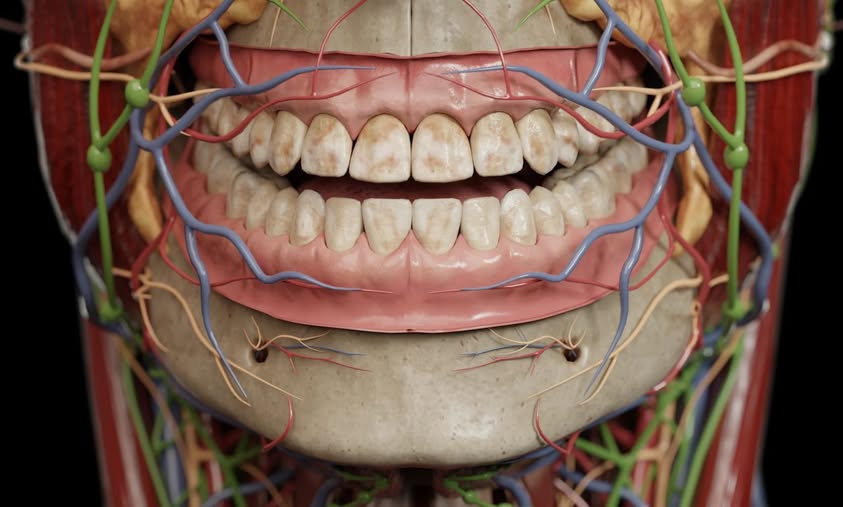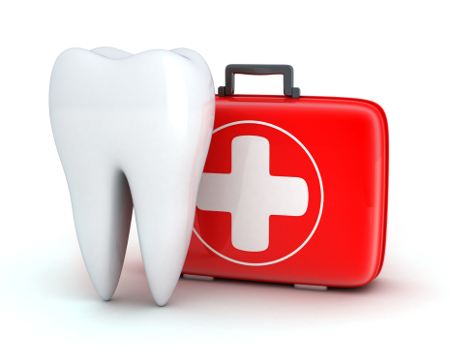Transforming Smiles, Restoring Confidence.
When the Armor Cracks: Protecting the Nerves Beneath Your Enamel
Language :

Topics:
Beyond the Shine: The Living Nerves Inside Your Tooth & A Story of Recovery
When you look at your smile in the mirror, you see enamel—the hardest substance in the human body. It’s the brilliant, white armor that protects your teeth from a lifetime of chewing, biting, and tasting. But what gives life to that armor? What makes a tooth more than just a calcified rock in your mouth?
The answer lies deep within, in a hidden network of nerves and blood vessels. Today, we're diving into the significant nerves of the enamel... or more accurately, the nerves that sense what happens to your enamel.
The Sentinels of the Smile: Understanding Dental Nerves
First, a crucial clarification: the enamel itself contains no nerves. It’s non-living and cannot feel pain. However, it is the first line of defense for the incredibly sensitive living tissue beneath it: the dentin and the dental pulp.
The real stars of our story are the nerves within the dental pulp (the tooth's "heart") and the periodontal ligament (the "shock absorbers" holding the tooth in place).
-
The Inferior Alveolar Nerve & Mental Nerve (Lower Jaw): This is a major branch of the trigeminal nerve. It runs through the entire lower jawbone, sending tiny nerve fibers up into each tooth's root via the apical foramen (a small hole at the tip of the root). These are the nerves inside the pulp that scream "OUCH!" when a cavity gets deep enough, or when you sip an icy drink. After exiting the jaw, it becomes the mental nerve, providing sensation to your lower lip and chin.
-
The Superior Alveolar Nerves (Upper Jaw): Similar to the lower jaw, the posterior, middle, and anterior superior alveolar nerves branch out to innervate all the upper teeth. They are responsible for the sensation in your upper molars, premolars, and front teeth.
Why does this matter? When your enamel is worn down by decay (cavities), acid erosion, or trauma, it exposes the underlying dentin. Dentin contains microscopic tubules that lead directly to the nerve-rich pulp. This is why you feel sensitivity and pain—the nerves are sending a distress signal that their protective armor has been breached.
Mariano's Story: The Slow Loss of a Smile
Mariano, a 50-year-old fisherman from a coastal town in the Philippines, had a smile that told a story of laughter, hard work, and a love for sweetened coffee and local delicacies. For years, he ignored the occasional twinges of pain, chalking it up to "sensitive teeth." He was busy providing for his family, and a dental visit was a luxury he felt he couldn't afford.
Slowly, almost imperceptibly, his smile began to change. The sharp pains faded into a dull, constant ache, which he numbed with over-the-counter painkillers. What he didn't realize was that the silence was more dangerous than the pain. The nerves inside his teeth were dying, one by one, as decay destroyed the enamel and invaded the pulp, leading to abscesses.
By the time the swelling in his jaw became unbearable, it was too late for fillings or root canals. The extensive decay had compromised the structure of most of his teeth. The dentist delivered the hard news: to save his health and relieve his pain, full-mouth extractions were the only viable option.
The day Mariano lost his last tooth, he felt he had lost more than just enamel and dentin. He felt he had lost a part of his identity, his confidence, and his ability to enjoy food.
The Road to Recovery: Treatment Options for Mariano
Losing teeth is not an end; it's the beginning of a journey to restore function and confidence. For Mariano, and for anyone facing a similar situation, modern dentistry offers several paths to recovery:
-
Immediate Dentures: Right after his extractions, Mariano was fitted with immediate dentures. This allowed him to have teeth the very same day his natural teeth were removed. While it helped him function and avoided the social difficulty of being without teeth, it was an adjustment. The fit changes as the jaw heals, requiring relining.
-
Conventional Dentures: After his gums and jawbone had fully healed (about 6-12 months), Mariano transitioned to a set of custom-made, conventional full dentures. These fit better and were more comfortable than the immediate set, restoring a significant degree of his chewing ability and appearance.
-
The Gold Standard: Dental Implants: For the closest feel to natural teeth, the dentist discussed implant-supported options.
-
Implant-Supported Overdentures: A few strategically placed implants in Mariano's jaw could snap his denture securely in place. This prevents slipping, allows for better chewing force, and helps preserve the jawbone from deterioration.
-
Full-Arch Fixed Implants (All-on-4®): This is a permanent solution where a full arch of teeth is fixed onto four or more implants. It looks, feels, and functions the most like natural teeth.
-
For Mariano, starting with dentures was the most financially accessible option, with the future goal of upgrading to implant-supported dentures as he saves up.
Your Dental Health: Advice to Protect Your Smile
Mariano’s story is a powerful reminder that prevention is always better than cure. Don't wait for the nerve to send a distress signal. Heed its early warnings.
-
Listen to the Twinges: Sensitivity to hot, cold, or sweets is your nerve’s way of telling you the enamel is thin or a cavity is near. See your dentist promptly.
-
Outsmart the Acids: Limit sugary and acidic foods and drinks. Rinse with water after consuming them, and wait at least 30 minutes before brushing to avoid scrubbing acid onto your enamel.
-
Master Your Technique: Brush twice daily with a soft-bristled brush and fluoride toothpaste, and floss every day to remove plaque from where your brush can't reach.
-
Make Your Dentist Your Ally: Biannual check-ups and cleanings are non-negotiable. They catch problems when they are small, simple, and inexpensive to fix.
Your enamel is a gift. Protect it, and you protect the vibrant, living nerves within, ensuring a healthy, confident smile for a lifetime.




